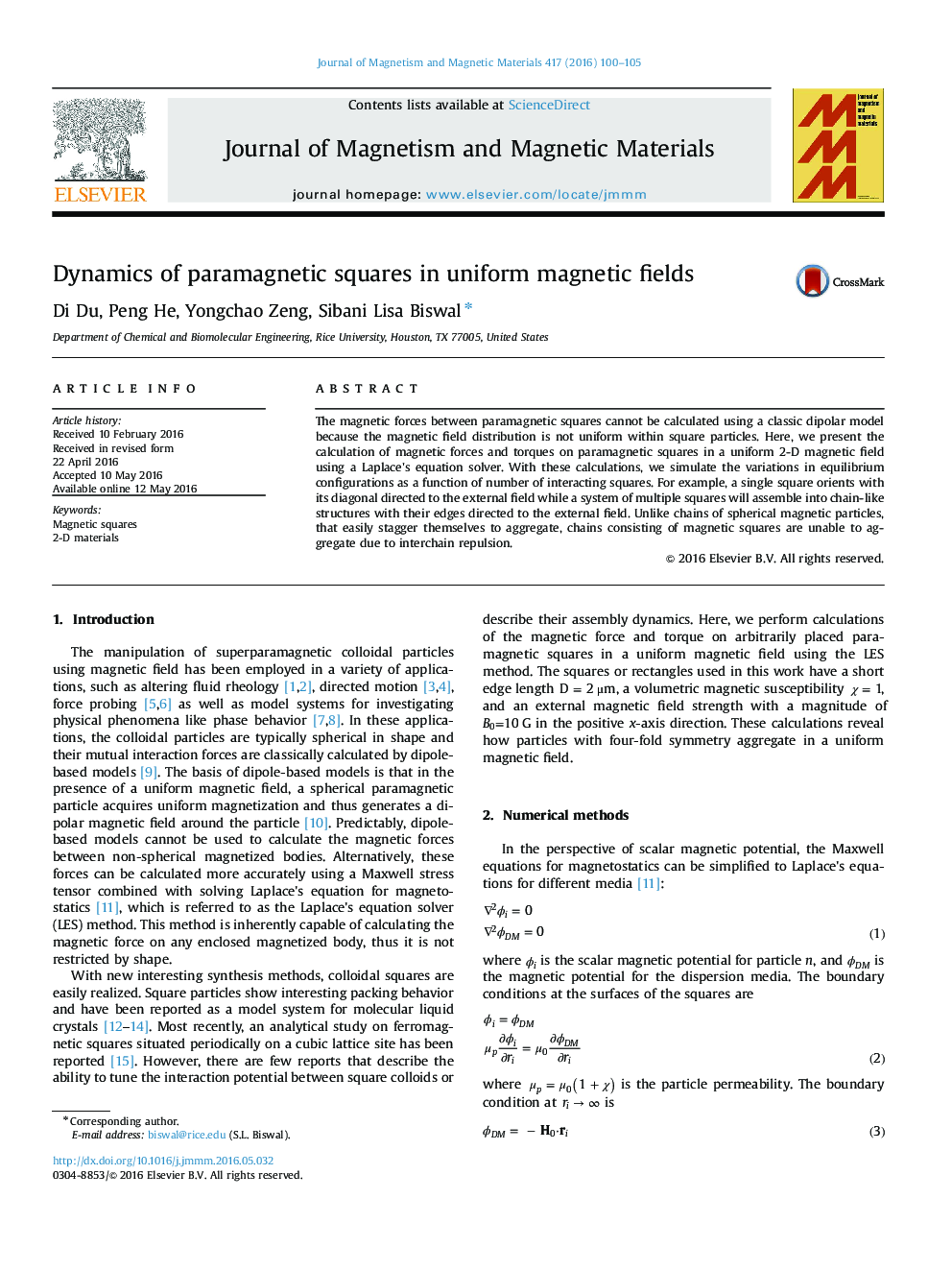| Article ID | Journal | Published Year | Pages | File Type |
|---|---|---|---|---|
| 1797762 | Journal of Magnetism and Magnetic Materials | 2016 | 6 Pages |
•Numerical calculations demonstrate that the orientation dynamics of a magnetic square or rectangle is highly dependent on the magnetic field distribution within the particle and its interactions with neighboring particles.•A paramagnetic square acquires an asymmetric field distribution that results in a torque that rotates it so that its diagonal aligns with the magnetic field.•Chains of magnetic square particles will not combine into bundles as observed in chains of magnetic disk particles.
The magnetic forces between paramagnetic squares cannot be calculated using a classic dipolar model because the magnetic field distribution is not uniform within square particles. Here, we present the calculation of magnetic forces and torques on paramagnetic squares in a uniform 2-D magnetic field using a Laplace's equation solver. With these calculations, we simulate the variations in equilibrium configurations as a function of number of interacting squares. For example, a single square orients with its diagonal directed to the external field while a system of multiple squares will assemble into chain-like structures with their edges directed to the external field. Unlike chains of spherical magnetic particles, that easily stagger themselves to aggregate, chains consisting of magnetic squares are unable to aggregate due to interchain repulsion.
Graphical abstractFigure optionsDownload full-size imageDownload as PowerPoint slide
